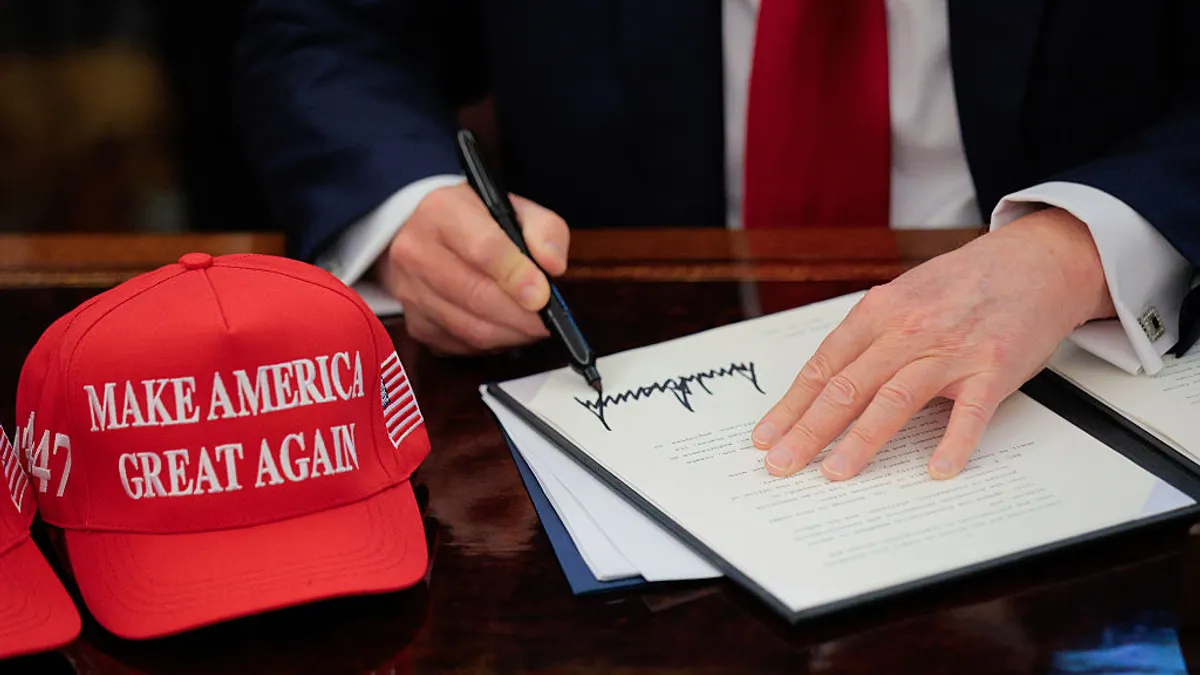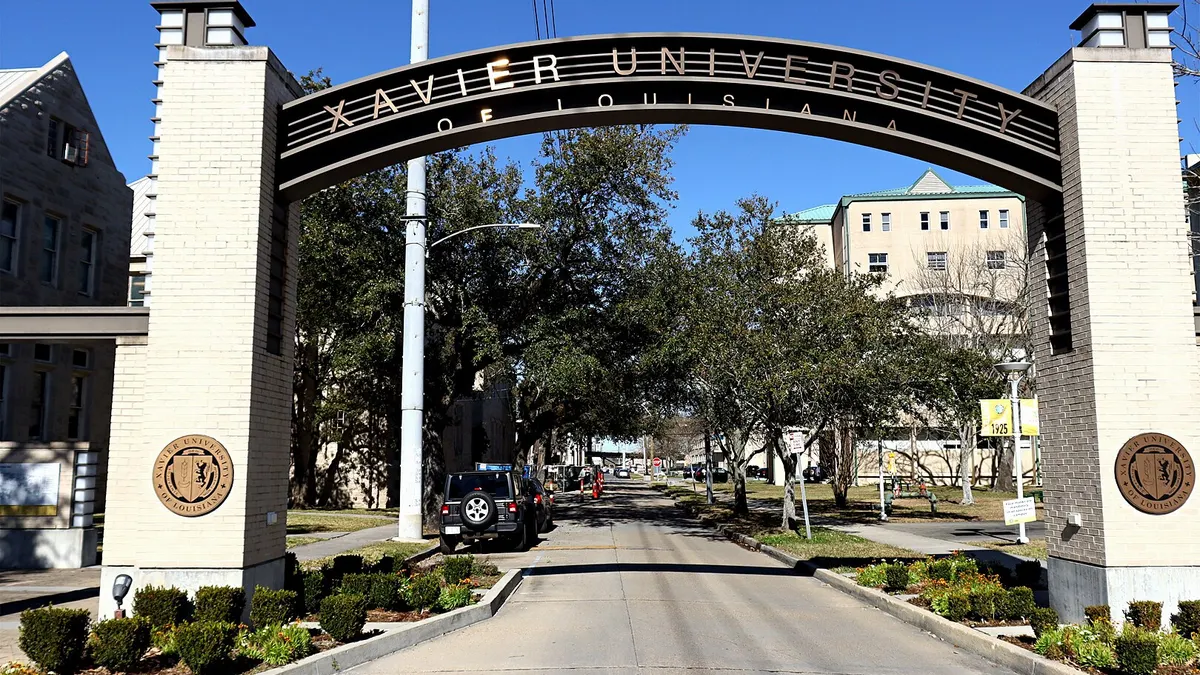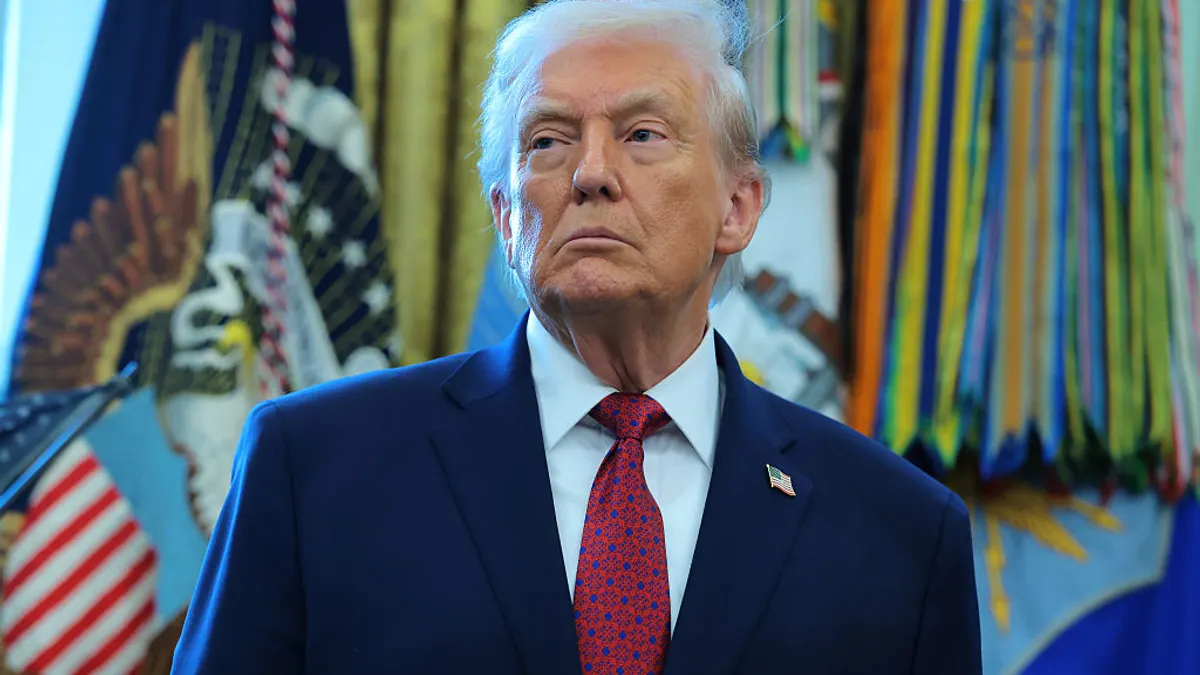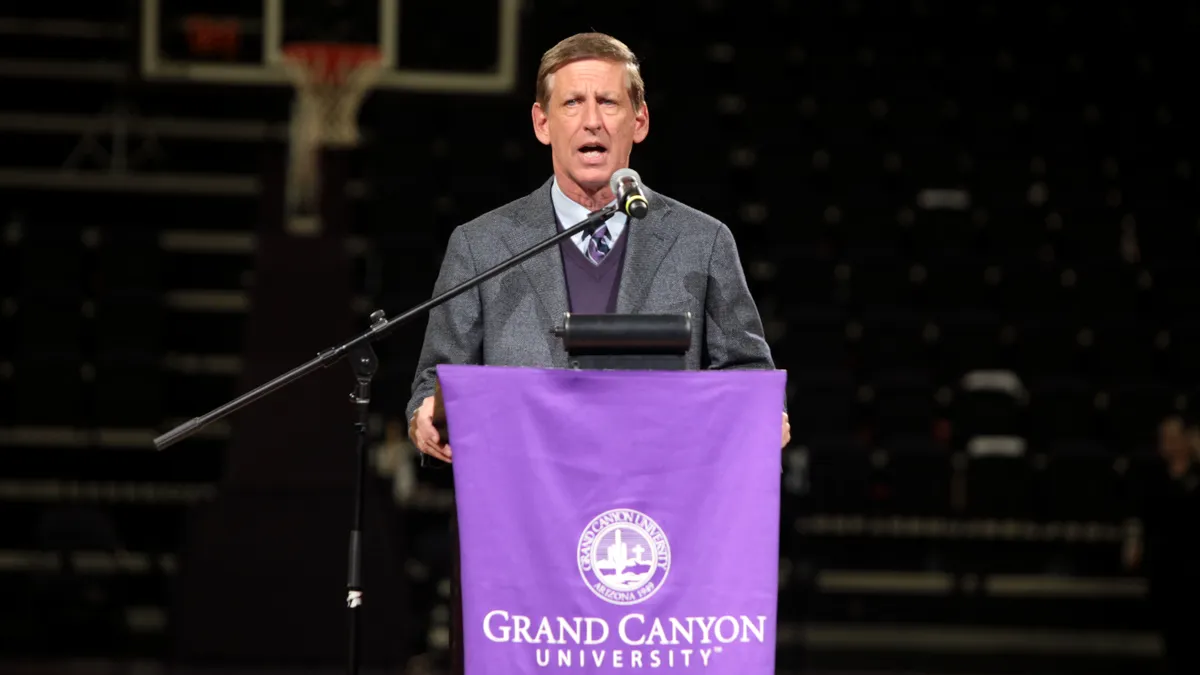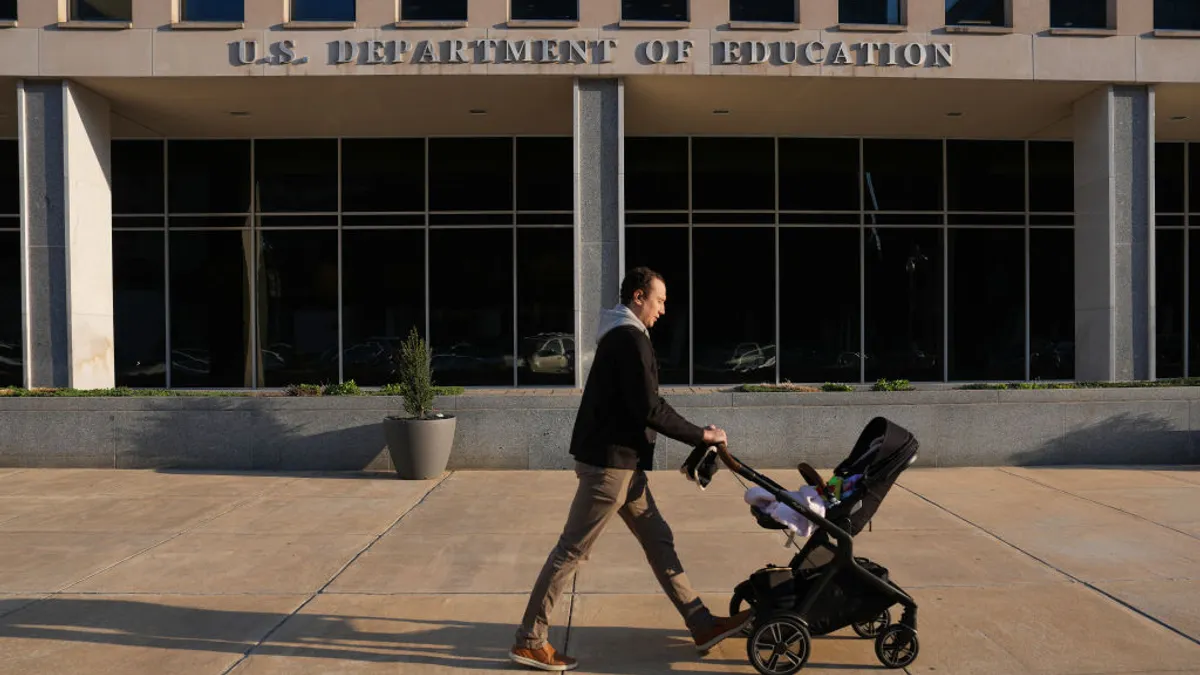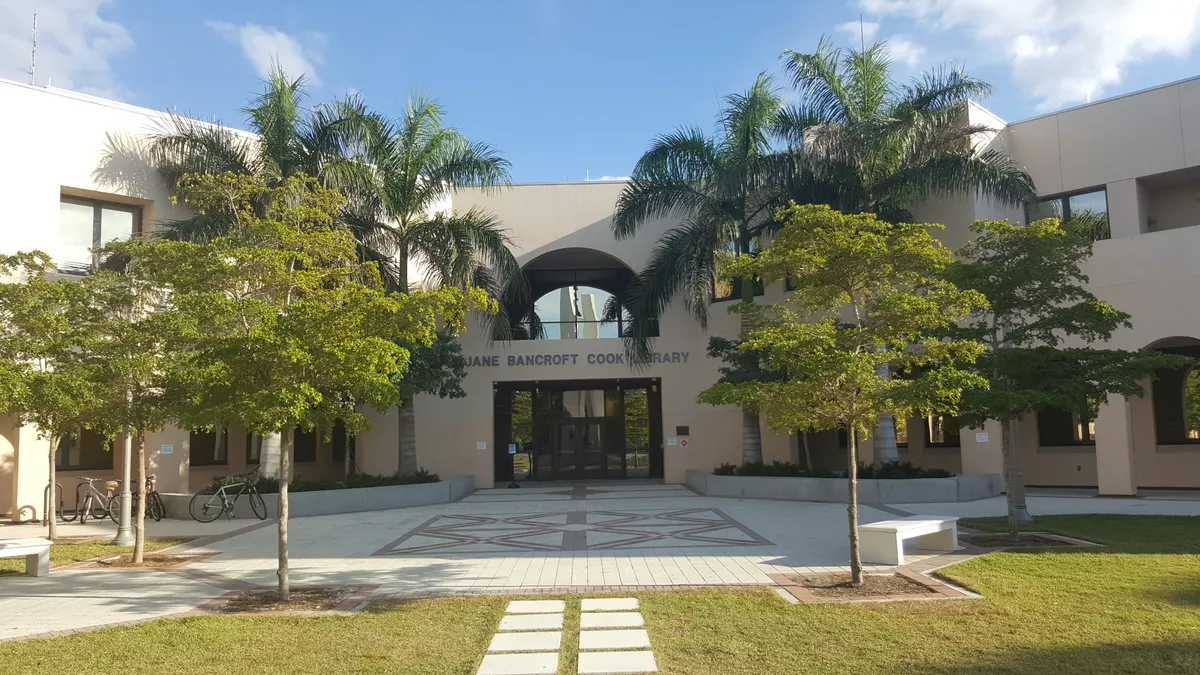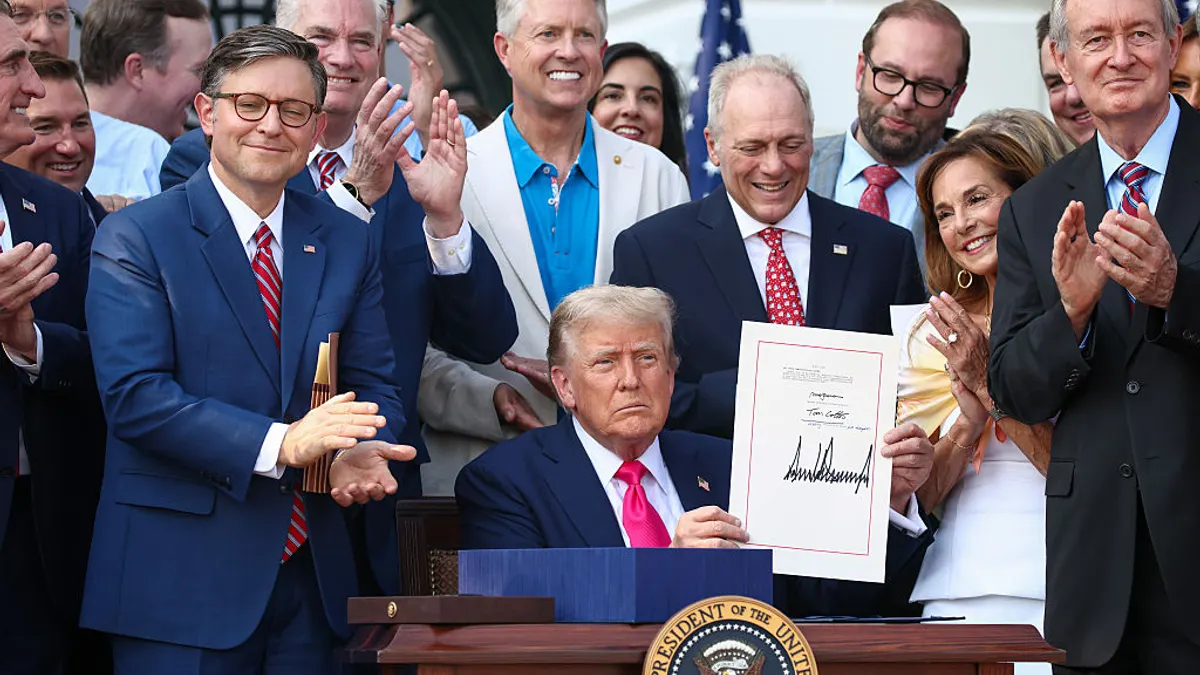NATIONAL HARBOR, Md. — Liz Clark would have lost a bet on the massive Republican tax and spending bill passed and signed into law earlier this month.
Clark, the vice president for policy and research at the National Association of College and University Business Officers, said she didn’t expect the bill to be finalized until early fall. While only off by a few months, Clark’s missed guess illustrates just one of many unexpected developments for higher education — and the world — since President Donald Trump retook office in January.
Speaking at NACUBO’s annual conference near Washington, D.C., on Sunday, Clark pointed to more than a decade of divided governments, intraparty policy squabbles and political gridlock as Democrats and Republicans have traded thin majorities in Congress.
Based on that history, it might have seemed improbable that Republicans could swiftly move a massive policy package through two houses of Congress where they held razor-thin leads. But Republicans did, and Congress got a bill to Trump’s desk by the date he demanded.
“This is a quintessential moment in seeing that past performance is no indication of future results,” Clark said.
The bill has plenty of implications for college finance departments, not to mention students and all other stakeholders in higher education. And it’s just one of many policy sea changes the sector has seen since Trump and a Republican-led Congress came to office six short months ago.
From new taxes to new legal liabilities, below is a look at how politics and policy are impacting college finance offices.
A blitz of executive orders
So far in his roughly six months in office, Trump has already issued more executive orders than Joe Biden did during his entire four-year term. According to data from the American Presidency Project, Trump is on pace to issue more orders per year than any other president in history, except potentially Franklin Roosevelt in his first term at the height of the Great Depression.
And several of those orders have cut to the heart of higher ed in the U.S., including orders targeting college diversity initiatives and seeking to revamp accreditation.
“Every president has tested the limits of executive power. This is not new,” Clark said. “What is new, at least for us, especially when it comes to issues impacting higher education, is the scope, the number of executive orders, the number of changes in law that are impacting your campuses.” She added, “We have, this year, been dealing with everything, everywhere, all at once.”
Trump’s order on diversity, equity and inclusion programs has drawn rebukes, including through litigation, for being vague and potentially stifling to free speech and intellectual activity.
"DEI is not illegal," Clark said, pointing specifically to the administration's executive order on the topic.
College researchers, meanwhile, are being asked to certify their compliance with executive orders, including those related to DEI, when applying for grants. That can present a dicey situation when directives are vaguely worded.
In some cases, federal agencies have even asked researchers to certify compliance with all future executive orders that may be issued someday, noted Jen Gartner, deputy general counsel for University of Maryland, College Park, at a NACUBO conference panel Monday.
“Obviously, we don't know what we would be certifying compliance with,” Gartner said.
Certification requirements for grants can vary by agency, but Gartner noted the one commonality is that they “now all mention that our certification is material for the False Claims Act.”
The False Claims Act bars fraud in government contracting. Trump’s Department of Justice in May launched an initiative that threatens universities with investigations under the law over their DEI programs and policies for transgender students and athletes.
Speaking from firsthand experience, Gartner said such investigations can take years to settle and cost colleges time, money and reputational damage — all of which adds financial and legal stakes to what might seem like bureaucratic formalities in certifications.
Big changes to higher ed under the big bill
The spending law enacted in July contains several policies set to shake up higher ed both directly and indirectly. “I would go so far as to say that the issues we saw in this bill were akin to a Higher Education Act reauthorization,” Clark said, referring to the primary federal law governing higher education and student aid — which was last reauthorized in 2008.
New policies include higher taxes on the wealthiest college endowments, with the top rate jumping to 8%, up from 1.4% currently.
It also opens up Pell Grants to short-term workforce-focused programs at accredited institutions that last eight to 15 weeks, while adding borrowing limits, and making other changes to student aid.
Bryan Dickson, NACUBO’s director of student financial services and educational programs, described the short-term Pell Grants as a “great win” for community colleges at this week’s conference. He added, however, that there are still questions about how the program will work, including about conflicting statute language on whether students already holding bachelor’s degrees will be eligible for the short-term grants.
The bill additionally creates a new accountability system for college programs that's meant to ensure most students get an earnings boost from their credentials.
College programs that fail the earnings test in two out of three consecutive years can lose their eligibility for the federal student loan program. Dickson emphasized that the policy applies only to direct loans, not other Title IV programs such as Pell Grants.
Aside from the specific higher ed policies, colleges could see indirect effects from the law.
One of the largest could be the massive cuts Republicans made to Medicaid and food stamp programs. Those cuts could put pressure on states to fill in the gaps to reduce the harms to their lower-income residents — which in turn could mean less money available for public institutions in state budgets.
“If you thought your current battles with your state legislature were bad, just wait for what's to come in 2026,” Clark said.
Deep cuts to the Education Department
Since taking office, the Trump administration has made deep staff cuts to the U.S. Department of Education — in line with a Trump executive order calling for the department’s dismantling to the “maximum extent appropriate and permitted by law.” A full elimination of the department would require congressional approval.
Now with a staff roughly half its former size, the Education Department still has plenty to do, including writing regulations for the new short-term Pell Grants and accountability programs created by the spending bill, among other administration priorities and statutory requirements.
Some effects from the cuts are already evident. Dickson pointed to a National Association of Student Financial Aid Administrators survey showing that 47% of institutions confirmed their region’s federal Financial Student Aid office had closed. Another 42% said that their students were “experiencing issues with federal loan servicing, such as delays, misinformation, or unresolved inquiries.”
More challenges could be ahead.
“We haven't seen yet a major stress test on what the staffing level decreases mean,” Dickson said. “We're approaching the fall semester. We're approaching fall drawdowns. We will see what that means.”
And despite Trump’s desire to wind down the Education Department, the agency — and all its regulations — still exist, for now.
“You cannot go forward in your work thinking there's going to be no Department of Education and not submit your reports to IPEDS [the federal Integrated Postsecondary Education Data System] or close out certain cases or investigations that may be ongoing,” Clark said. “Your work continues. Your compliance requirement continues.”


